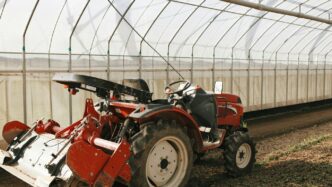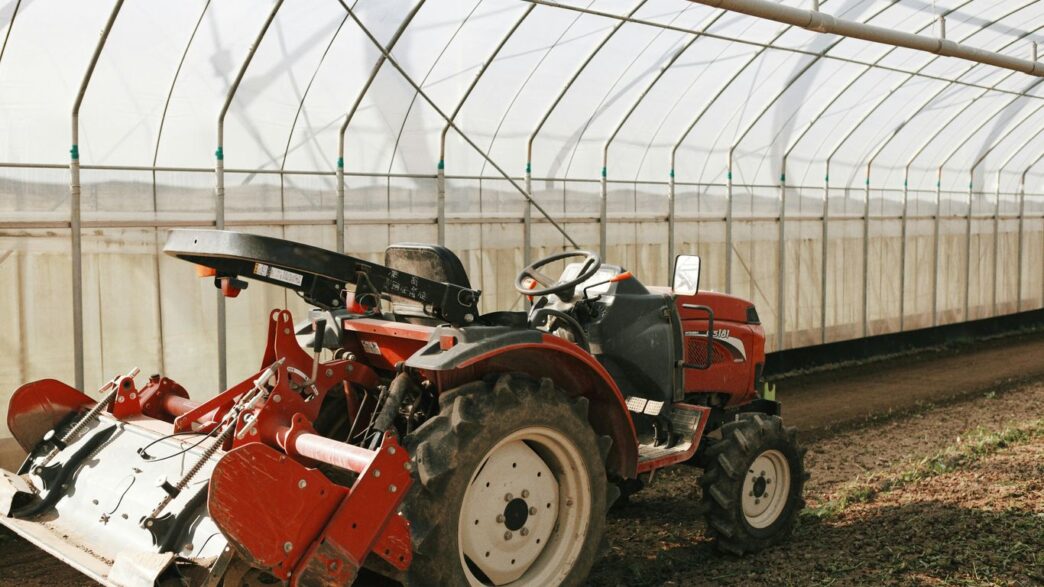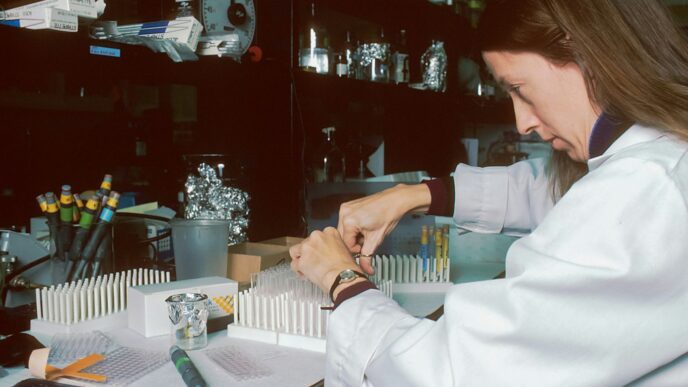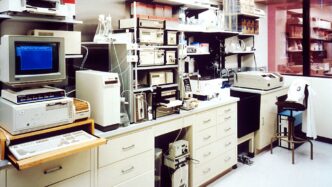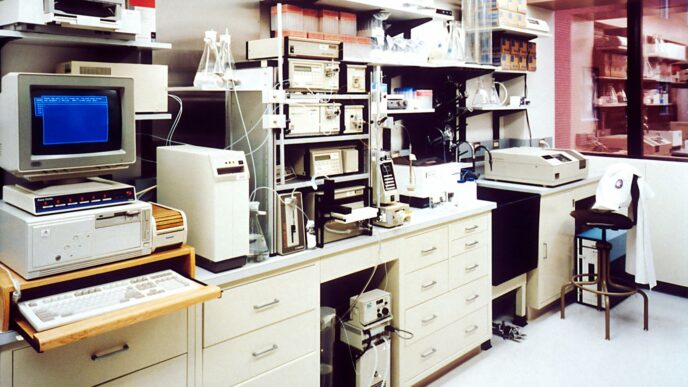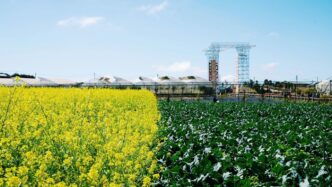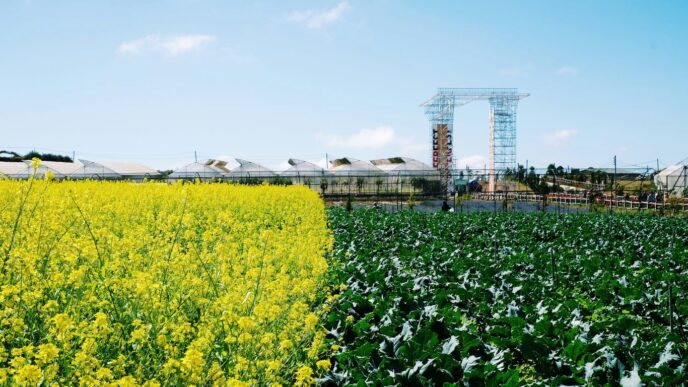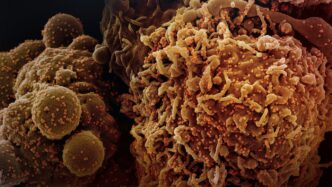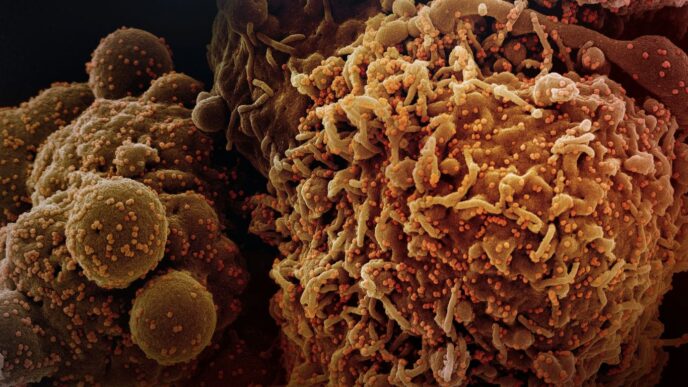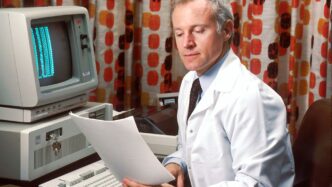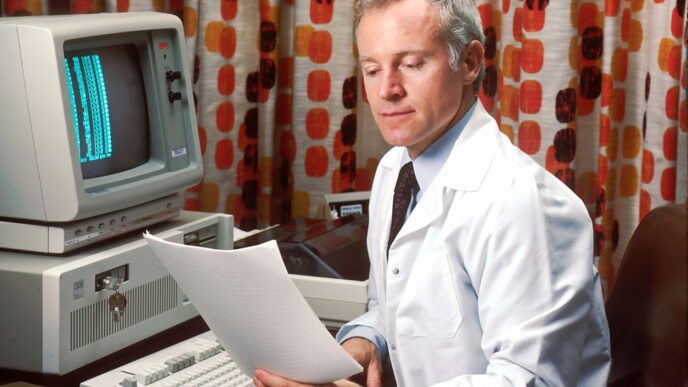Agriculture is changing fast, and Bayercrop is right in the middle of it. In 2025, they’re not just following trends—they’re setting them. With new tech, smarter seeds, and a real push for sustainability, Bayercrop is helping farmers grow more with less strain on the planet. Whether it’s using data to make better decisions, rolling out eco-friendlier crop protection, or making sure small farmers aren’t left behind, Bayercrop’s moves are shaping what farming looks like now and in the future.
Key Takeaways
- Bayercrop is using digital tools and smart tech to help farmers use fewer resources while growing more food.
- Gene editing and better seed breeding are making crops tougher against climate change and pests.
- Farmers get real-time advice and support through Bayercrop’s digital platforms, making it easier to manage fields and boost yields.
- Sustainable farming practices like soil health programs and biological pest control are a big focus for Bayercrop in 2025.
- Bayercrop’s approach ties together tech, sustainability, and farmer support, setting a new standard for modern agriculture.
Bayercrop’s Breakthroughs in Precision Crop Protection
Bayercrop has spent years sharpening its precision crop protection game, but 2025 really feels different. This isn’t about simply spraying fields and hoping for the best; it’s about smart tools, lighter footprints, and results that matter—both for yields and the planet.
Next-Generation Smart Application Technologies
It’s wild how much has changed. Bayercrop is now using GPS-guided sprayers and machine-mounted sensors that "see" exactly where and when a crop needs protection. Forget broad treatments—now it’s about micromanaging, down to the square meter, to cut waste and save money. Here’s how it actually looks in practice:
- Sensors scan live for pest and disease pressure—and only trigger application where needed.
- Smart nozzles adjust droplet size and spray pattern to reduce drift by more than half.
- "Prescription maps" are made from drone flyovers and satellite data so treatments follow actual crop health.
The payoff? Fewer chemicals, stronger crops, and less impact outside the target area.
Ecological Impact Reduction Initiatives
Bayercrop set some real targets this year, not just vague promises. Their focus: curb the environmental toll of plant protection. It’s not just about less product; it’s about smarter product. Some ways they’re pushing this forward:
- Formulations that break down quicker in the field, so they don’t hang around in the ecosystem.
- Strict drift-reduction mandates on every new pesticide launched from 2024 onward.
- Programs that track and report pollinator safety on every test plot.
Here’s some data showing the change:
| Metric | 2021 (baseline) | 2025 (current) |
|---|---|---|
| Avg. chemical used (kg/ha) | 2.1 | 1.4 |
| Drift incidents per 1,000 ha | 8.5 | 2.9 |
| Confirmed pollinator impacts | 12 | 2 |
Not perfect, but it’s heading in the right direction.
Site-Specific Disease and Pest Management
Gone are the days of treating the whole farm the same. Bayercrop is leading a shift to site-specific disease and pest control. This approach is all about seeing trouble areas, not just assuming they’re everywhere. Here’s what that looks like on the ground:
- Farmers get daily pest risk maps on their phones, updated with local weather and disease data.
- Some fields are split into mini-zones; only hot spots get a full dose, and the rest get less, or none.
- Treatment schedules are linked to forecasts, so applications happen before major outbreaks, rather than after.
This means fields stay healthier, and less stuff goes into them overall. It’s a win-win: more targeted defense, less collateral damage.
If you’re walking a field in 2025, you’ll notice—far less blanket spraying, more scout-driven decisions, and a clear sense that precision doesn’t just mean high-tech, it means smarter, simpler, and more sustainable choices.
Advancing Seed Genetics and Gene Editing with Bayercrop

Bayercrop is making huge changes to seed science in 2025—and they’re not just doing it for flash. These new genetics and gene editing tools are showing up in real fields, facing real challenges, and helping farmers handle everything from heat to pests.
CRISPR and Genomic Innovation in Crop Breeding
Bayercrop uses CRISPR technology to fine-tune the traits that really matter for crops. It means they can target a single gene linked to drought or disease, rather than hoping nature takes its course. You see it in faster development times—what used to take years now happens in a fraction of the time.
Things they’re working on with CRISPR:
- Resistance to the nastiest modern crop diseases
- Customized grain quality
- Faster-growing plants for tight growing seasons
It’s not all theory, either. In 2025, these improvements are in actual planting decisions, not just the research pipeline.
Climate-Resilient Seed Varieties for 2025
Farmers can’t afford to grow crops that wilt at the first sign of drought or surprise heatwave. Bayercrop is pushing seed varieties built to survive:
- Drought resistance: Roots that go deeper, conserving water
- Heat tolerance: Plants that don’t shut down in unexpected warm spells
- Pest and disease resistance: Built-in defenses that mean less chemical spray
| Trait Improved | Avg. Yield Gain (%) | Adoption Rate (2025) |
|---|---|---|
| Drought Resistance | 18 | 42% |
| Heat Tolerance | 15 | 37% |
| Disease Resistance | 21 | 48% |
Farmers who use these seeds often tell stories about fields that stayed green while others dried up. The numbers in the table are conservative—real-world results often outpace the trials.
Nutritional Enhancement of Staple Crops
It’s not just about yield anymore. Bayercrop puts time into boosting the nutritional punch of basic grains. That means everyday foods can offer more vitamins or better protein content. Here are some of the changes happening in 2025:
- Increased iron and zinc in rice and wheat
- Improved amino acid balance in corn and soy
- Varieties with omega-3 fatty acids for better heart health
This isn’t a small tweak; for some families, it means real nutrition improvements in foods they already eat, without a change in cooking or shopping routines.
Digital Transformation: Bayercrop’s Data-Driven Farming Solutions

In 2025, Bayercrop has baked digital tools into the core of farming. Data and real-time tech have shifted how crops are grown, managed, and sold—often in ways that previous generations couldn’t imagine. It’s not just the big agri-businesses benefiting either; smallholder farmers and family-run operations are now getting in on the action, thanks to accessible mobile and cloud-based solutions. Let’s break down how this digital leap is happening.
Climate FieldView™: Integrated Digital Agriculture Platform
Climate FieldView™ is Bayercrop’s hub for on-farm data. The platform gives a clear, straightforward dashboard where farmers see field health, equipment performance, and yield metrics in one place. Here’s why it’s a game-changer in day-to-day work:
- Real-time satellite images help spot plant stress, drought, or disease before it’s obvious in the field.
- All spraying, planting, and harvest info gets logged automatically, which means less paperwork and better traceability.
- Recommendations pop up for input decisions, so fertilizer or pesticide isn’t wasted.
Remote Sensing and Farm Analytics
Gone are the days of guessing what’s happening in a back forty acres. Remote sensing uses satellites and IoT sensors to give up-to-date pictures of:
- Soil moisture and temperature
- Crop growth rates across zones
- Where pests or diseases might break out next
This tech is especially handy for:
- Saving water and fertilizer—only apply what’s needed, where it’s needed.
- Early warnings so problems can be fixed before yields are hit.
- Large-scale tracking for sustainability and health certifications.
Yield Forecasting and Automated Compliance Reporting
Predicting yields used to be part science, part art. Now it’s a full-on algorithmic affair, combining AI, field images, and on-the-ground sensor data.
Here’s a quick snapshot of what that means for a farm business:
| Feature | Before Digital | With Bayercrop Solutions |
|---|---|---|
| Yield Forecast Accuracy | < 70% | 90%+ |
| Time Spent on Compliance Reports | Hours/weeks | Minutes |
| Data Collection Effort | Manual/scattered | Mostly automated |
Automated compliance tools also mean regulatory forms fill themselves out, and farmers just check, sign, and submit. This frees up a lot more time for actual farming—and family.
Ultimately, digital farming at Bayercrop isn’t just a corporate buzzword. It really changes how fast and well farmers can make decisions, and it’s leading to more food with less waste, improved profits, and better impact stats to show off. In 2025, that’s no longer just the future; it’s happening right now.
Sustainable Biologicals and Integrated Pest Management at Bayercrop
Bayercrop’s approach in 2025 is not about just killing pests. It’s about supporting healthy farms that get more resilient every year. They pay a lot of attention to using living, naturally sourced tools to help farmers keep crops safe while easing the pressure on the environment. Their take on pest management isn’t just about stopping outbreaks but making sure wildlife and the whole field ecosystem stay in balance.
Development of Beneficial Biological Products
Instead of throwing the same old chemicals at every problem, Bayercrop has been focused on growing their range of biological products. These are solutions made from:
- Specific bacteria or fungi that help plants defend themselves
- Insect-killing viruses that only go after crop-eating bugs
- Biopesticides that break down quickly and don’t stick around in the soil or water
Here’s a quick breakdown of their impact compared to conventional options:
| Product Type | Target Scope | Environmental Residue | Typical Reapplication Rate |
|---|---|---|---|
| Chemical Pesticide | Broad Spectrum | High | 2–3 times per cycle |
| Biological Solution | Targeted | Very Low | 1–2 times per cycle |
Farmers are seeing fewer issues with resistant pests and fewer problems with chemical buildup.
Integrated Pest Management Strategies
Bayercrop isn’t just handing out new bottles and walking away. Their integrated pest management (IPM) advice is about timing and combination. Here’s what usually goes into their programs:
- Monitoring crops for early pest signs using digital tools
- Using natural predators like ladybugs as the first line of defense
- Adding targeted biological sprays when monitoring shows it’s really needed
- Rotating crops and using trap plants to break pest cycles
It’s a team effort, and farmers are learning to rely more on data and less on guesswork.
Regulatory Compliance and Environmental Safeguarding
Regulations on synthetic chemicals are tighter than ever, especially in Europe and parts of Asia. Bayercrop has been:
- Rolling out products that meet strict local and global eco-standards
- Training farmers to keep records and trace applications to every part of their field
- Running trials that follow up on wildlife safety, water quality, and soil residue
Results from their pilot sites show a:
| Metric | 2022 Value | 2025 Value |
|---|---|---|
| % Synthetic Chemical Reduction | 12% | 34% |
| Biodiversity Index Change | +2.1 | +3.8 |
It’s not perfect, and farmers still need to manage lots of moving parts. But choosing sustainable biologicals and following a solid IPM plan is less about ‘zero harm’ and more about making progress you can measure, year after year.
Regenerative Agriculture Programs Led by Bayercrop
Bayercrop isn’t just talking about sustainability—they’re making real changes on the ground with programs rooted in regenerative agriculture. Below, you’ll see how they’re tackling the big issues: building up the land, rewarding farmers, and bringing back more plant and animal life to fields worldwide.
Soil Health Restoration and Carbon Sequestration
Restoring tired, overworked soils is a huge part of Bayercrop’s philosophy in 2025. Their programs focus on ways to not only stop soil loss, but actually rebuild what’s been lost over the years. Here’s what they’re up to:
- Promoting the use of cover crops to prevent erosion and feed soil microbes.
- Reducing how often farmers till the ground, which protects structure and keeps more carbon in the soil.
- Rotating crops and even mixing them in the same field to break up disease cycles and build nutrients naturally.
A quick look at the numbers:
| Practice | Change in Soil Organic Matter | Estimated Carbon Sequestration |
|---|---|---|
| Cover Cropping | +25% | Up to 2.5 tons/acre/year |
| Reduced Tillage | +30% | Up to 3 tons/acre/year |
| Diverse Crop Rotations | +18% | Around 1.3 tons/acre/year |
Farmer Incentives for Climate-Smart Practices
Changing up how you farm can be expensive and a little scary, so Bayercrop runs incentive programs for those who make the leap to climate-smart practices. These aren’t just empty promises; here’s what’s actually on offer:
- Payments for every ton of carbon stored in their fields.
- Cost shares on new seed types, cover crop mixes, or reduced-tillage gear.
- Real-time digital tracking tools so farmers know if their efforts are working—or need a tweak.
The end goal: Farming that’s better for the planet but also pretty good for the bottom line.
Enhancing On-Farm Biodiversity
Bringing more life back to the farm is front and center for Bayercrop in 2025. It’s not just about having more birds or bugs—it means stronger, more adaptable fields. Here’s how they’re going about it:
- Planting wildflower strips and hedgerows to attract pollinators and pest-eating insects.
- Pushing for intercropping and companion planting instead of single-crop fields everywhere.
- Protecting wetlands, ponds, and natural waterways within or alongside farmland.
Some early results from their programs:
| Biodiversity Practice | Increase in Beneficial Species | Crop Yield Change |
|---|---|---|
| Wildflower Strips | +40% pollinators/insects | +5% |
| Hedgerows | +28% birds/small mammals | Stable/Improved |
| On-Farm Wetland Protection | More amphibians, birds | No negative impact |
If there’s one thing Bayercrop is proving, it’s that making a farm healthier can also mean a better future for everyone—farmers, their communities, and the planet alike.
Harnessing AI-Powered Machinery and Remote Sensing at Bayercrop
Farming in 2025 is totally different from just a few years ago. Bayercrop has pushed tech in the field, making autonomous machines, satellites, and artificial intelligence everyday tools for growers. This shift lets farmers be more precise, save time, and use resources smarter than ever before.
Deployment of Autonomous Farm Equipment
- Self-driving tractors and sprayers cover huge fields without a person in the driver’s seat. They adjust speed, direction, and application rates on their own.
- Drones and robots patrol fields, spotting weeds and pests. They target only the problem spots, so there’s less waste.
- According to data shared in Emerging technologies, these advances have cut labor needs by 40% and upped the accuracy of pesticide/fertilizer use by 35%.
| Technology | Labor Saved | Precision Improvement |
|---|---|---|
| Autonomous Tractors | 40% | +35% |
| Drones/Robots | 20-22% | +30% |
Precision Input Application and Resource Efficiency
It’s pretty wild how the new machines know exactly where and how much to apply. Here’s what makes the difference:
- Soil sensors measure moisture and nutrients before a single drop goes down.
- AI tells the machines to use less where plants are healthy, and more where they’re not. No more blind spraying.
- Mapping tools help spot which patches of land need help—and which don’t.
It means less fertilizer runs off into rivers and less chemicals hit the crops the bees love.
AI-Driven Crop Monitoring for Real-Time Decision Making
Every hour, satellites and machines snap fresh field images. AI runs the numbers on growth, disease spots, and yield forecasts. Farmers can:
- Get alerts if a section of corn starts getting sick, so they can treat it fast.
- See weather and soil data right on their phone, not weeks later.
- File paperwork for government compliance in minutes, since the data is all ready to go.
Honestly, a lot of growers never thought they’d have this much digital backup when making decisions. Bayercrop’s tech isn’t just theory either; it’s showing up on real farms and making an impact. And as we saw in the Emerging technologies article, what used to sound like science fiction—autonomous tools, instant crop data—has started changing daily life, even on the farm.
Empowering Farmers Through Digital Access and Support with Bayercrop
Bayercrop isn’t just focused on making better seeds or more efficient crop sprays—what’s really coming alive in 2025 is how digital tools and access to information are actually reaching farmers, even in hard-to-reach areas. It’s the human side of the tech revolution, where digital access meets daily decisions in the field. Below, I’ll break down exactly what Bayercrop is doing to push digital support from boardrooms to the very people growing our food.
Mobile Solutions for Smallholder Inclusion
Getting modern technology in the hands of small farmers can feel impossible, but Bayercrop is trying some ideas that actually seem to stick:
- Practical mobile apps usable on basic smartphones—these offer advice, alerts, and weather forecasts in local languages.
- Digital payment systems so farmers can buy seeds or fertilizers with less hassle.
- Remote advisory through call centers that talk farmers through problems, step by step.
In some pilot regions, studies show more than 80% of smallholders using these digital tools ended up changing at least one farming practice for the better. That’s not just a stat; it’s millions of people with more control over their business.
Digital Training and Advisory Systems
Remember the days of traveling hours just to attend training at an extension office? Bayercrop is phasing in digital training methods, which cut travel time to basically zero. Here’s what they’re rolling out:
- Virtual classrooms and e-learning modules (from basics about seeds to advice on eco-friendly pest control).
- Live Q&A sessions and community forums for farmers to ask experts and get fast answers.
- Demo videos and field experiences viewable right on phones or computers.
These efforts aren’t about fancy certificates—it’s about saving a struggling tomato crop with advice you get the same afternoon you need it.
Financial Tools for Modernized Farm Operations
You can have the best digital gadgets, but if you can’t afford what you need for your crops, none of it matters. Bayercrop’s digital platforms are starting to bridge this gap by:
- Linking farmers to microcredit and insurance offers directly through secure data systems (secure data transmission is a priority in these platforms).
- Providing online market access, helping farmers see real-time crop prices and make smarter selling decisions.
- Integrating recordkeeping for loans and subsidies so no one gets lost in the paper shuffle.
At a Glance: Key Impact of Bayercrop’s Digital Farmer Support (2025)
| Support Area | Reported Increase/Improvement | Estimated Usage Rate |
|---|---|---|
| Mobile Solutions | 2-12% higher adoption | 80% (target regions) |
| Digital Training | Faster decision-making | 75% (pilot areas) |
| Financial Access | Simplified credit/insurance | 50% (growing) |
Just by covering the basics—information, advice, access—Bayercrop is turning digital farming from buzzword to daily reality for a lot more people than ever. As this momentum continues through 2025, more farmers are included in what’s shaping up to be a major transformation of agriculture.
Bayercrop’s Comprehensive Approach to Sustainability in 2025
It’s 2025, and Bayercrop isn’t just checking boxes when it comes to sustainable agriculture—they’re seriously changing how farms operate for the planet and for people. The whole idea is that every part of their business—from seeds to software—has to work in sync to reduce agriculture’s environmental impact. Let’s break down how they’re doing it, starting with their biggest moves.
Greenhouse Gas Reduction Initiatives
Bayercrop has a bunch of ongoing strategies to slash emissions across farming operations and through their supply network. It’s not just about smaller carbon footprints for the company—they’re helping farmers get there too. One of their main targets is aligning with internationally recognized carbon-neutral benchmarks—this isn’t just for show.
Some of the ways Bayercrop is tackling greenhouse gas (GHG) emissions:
- Expanding use of renewable energy within company facilities.
- Encouraging low-emission fertilizer and input choices.
- Partnering with farms to track and offset field-level emissions using digital diagnostics.
Here’s a quick look at progress so far, and their 2025 goals:
| Category | 2023 Baseline | 2025 Target |
|---|---|---|
| GHG Emissions, Own Ops | -21% | -35% |
| GHG Emissions, Supply Chain | -9% | -20% |
| Farm Carbon Footprint | -15% avg. | -25% avg. |
Pollinator and Biodiversity Protection Programs
If you pay attention to news, you know pollinators—like bees—aren’t exactly thriving, and Bayercrop’s been working on this from multiple angles. They’re not just modifying products but supporting habitats too. Some highlights:
- Creating buffer zones with wildflowers and native grasses near fields.
- Tweaking chemical plans, reducing pesticide reliance through smart application and more biologicals.
- Launching local biodiversity projects to boost wildlife and stabilize insect populations—sort of like their own pollinator safety net.
You can see similar thinking in other industries, when concepts blend real-world change and tech. Think about BMW’s Vision Vehicle concept—futuristic, sure, but rooted in making cars safe and adaptable.
Water Use Optimization Through Digital Tools
Water shortages are a daily worry in a lot of places now, so Bayercrop focuses hard on smarter water management. This isn’t the old "set and forget" irrigation. Instead, they’re rolling out finely tuned digital irrigation planning tools, including:
- Climate-adaptive cropping calendars driven by real field data.
- Remote sensors for soil moisture—no more guesswork.
- Precision scheduling that matches water supply with shifting weather and plant needs.
These changes mean less water gets wasted, and fields stay productive even during drought years. Bayercrop’s approach depends a lot on real-time data streams and making them work for every type of farmer—big operations or smallholders alike.
So when you hear about Bayercrop’s sustainability focus in 2025, it’s not just a buzzword. Their strategy works across every piece: emissions, biodiversity, and water. All the small steps add up—making a tough job like farming just a bit more practical, even as the world keeps changing.
Conclusion
Looking at everything Bayer Crop Science is doing in 2025, it’s clear they’re not just talking about change—they’re actually making it happen. From smarter seeds and digital tools to new ways of protecting crops and helping farmers, Bayer is pushing agriculture forward. They’re not just focused on bigger harvests, but also on making sure farming is better for the planet and future generations. It’s a lot to take in, honestly. But seeing these ideas in action gives some hope that farming can keep up with all the challenges—whether it’s climate, food demand, or just making sure farmers have what they need. If this is the direction things are going, the future of agriculture looks a bit brighter, and maybe even a little more sustainable for everyone.
Frequently Asked Questions
What is Bayercrop and what does it do for agriculture?
Bayercrop is a branch of Bayer that focuses on helping farmers grow food in smarter and more sustainable ways. They use new tools, seeds, and digital technology to make farming better for the planet and for people.
How does Bayercrop help protect crops with less harm to nature?
Bayercrop uses smart sprayers and special apps to only put crop protection products where they are needed. This reduces waste and keeps important insects and plants safe, helping the environment.
What are Bayercrop’s new seed technologies?
Bayercrop uses tools like CRISPR to make seeds that can handle tough weather, bugs, and diseases. These seeds can also have better nutrition, so crops are healthier and grow well even when the climate changes.
How do digital tools from Bayercrop help farmers?
Bayercrop offers digital platforms like Climate FieldView™, which helps farmers track their crops, predict yields, and use water and fertilizer more wisely. This makes farming more efficient and helps farmers make better decisions every day.
What is regenerative agriculture, and how is Bayercrop involved?
Regenerative agriculture means farming in a way that improves the soil, stores more carbon, and brings back more plants and animals to the farm. Bayercrop supports these practices by giving farmers advice, rewards, and new products to help them farm in a climate-friendly way.
How does Bayercrop support small farmers and make farming fairer?
Bayercrop creates easy-to-use mobile apps, online training, and financial tools that help small farmers learn new skills, get advice, and manage their money. This helps more people join modern farming and make a good living.

